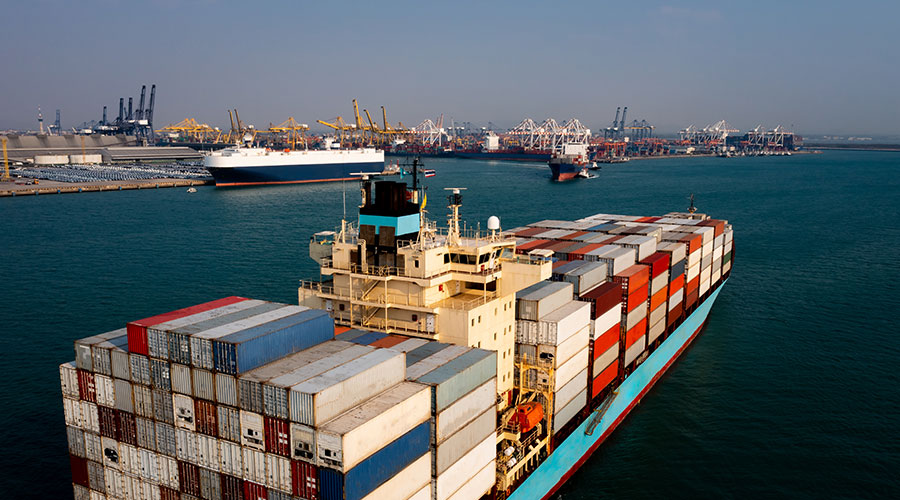


Recently, the US tariff policy and the proposed imposition of port fees on Chinese ships have intensified the wait-and-see mood in the market, and shipments after the holiday have failed to reach the expected level, and the latest Shanghai export container Freight Index (SCFI) released on March 7 continued to fall 5.21% to 1436.3 points, which is the eighth consecutive week of decline. The freight rates of the main routes in Europe and the United States are showing a downward trend, especially the spot price of the European route has fallen below the contract price, and the freight rate of the United States and the West route is almost approaching the cost price.
Specifically, freight rates on European routes fell 6.56%, reversing last week's gains; Mediterranean routes fell 2.97 per cent, as a price increase implemented by shipping companies in March failed to stem the decline. This week's planned price increases on European routes failed to materialize, and instead dropped by $400 per container. The freight rate of the US-West route has fallen below the $2,000 mark, and currently remains between $1,800 and $1,900, which is the cost price of many companies, and is expected to continue to fall within months. Still, shipping giant Maersk has already announced plans to raise prices in April.
Large freight forwarders point out that the current rates on the West American route are $1,900 for Class A carriers, $1,800 for Class B carriers and less for Class C carriers, which is close to or at cost for many carriers. U.s.-east fares range from $3,200 to $3,300. The European route originally planned to raise the freight rate from $2,500 to $3,000-3,200 from March 5 to 14, but the result did not rise, and it has dropped to $2,100, and it is likely to fall further below $2,000 next week.
Many industry insiders believe that the frequent tariff measures of the United States and the imposition of high fees on China's shipbuilding industry may have a negative impact on the market in the short term, leading to a slowdown in economic and consumer activities and a strong wait-and-see mood in the market. However, in the long term, if these measures disrupt supply chains and trigger a crisis of disruption, demand for maritime transport could increase.
Freight forwarding industry insiders said that the second quarter is traditionally expected to see seasonal improvement and a return in demand. Maersk recently announced price increases for European routes in April, raising freight rates to $2,600 per 20-foot container and $4,000 per 40-foot container. As for the US-West route, the current freight rate has fallen below the $2,000 line, and the freight rate per 40-foot container is between $1,800 and $1,950, which is close to the cost price of many companies. If rates remain low, it will be difficult to sign long-term contracts for the New Year. There are already rumors that the company plans to raise prices in April.
However, there are many market variables, and whether freight rates can be successfully increased and by how much will still depend on changes in cargo volume and ship loading rates. The latest twist is that the United States plans to impose port fees on Chinese-made, Chinese-owned ships and has urged Allies to take similar measures or face retaliation. The scope of this policy covers container ships, bulk carriers, LNG carriers, car carriers, etc. As the case is more controversial, the Office of the United States Trade Representative will hold a hearing on the 24th.
As one of the world's largest cargo routes, the United States line has recently entered the peak season for long-term contract signing, and the stability of freight rates has become a top priority for shipping companies. For the week, US-West routes continued to fall 7.7%, while US-East routes fell 5.1%. Freight forwarding industry insiders said that the spot freight rate of the US-West route has fallen below the $2,000 defense line, almost close to the cost price. Considering that the United States line is about to sign a long-term contract, the industry revealed that it will promote the price increase plan in April at the latest.
SCFI Rates:
Shanghai to Europe freight 1582 US dollars /TEU, down 111 US dollars, down 6.56% week;
Shanghai to the Mediterranean freight rate of 2,517 US dollars /TEU, down 77 US dollars, weekly down 2.97%;
Shanghai to the United States freight 2291 US dollars /FEU, down 191 US dollars, week down 7.70%;
Shanghai to the United States East freight 3329 US dollars /FEU, down 116 US dollars, down 3.31% week;
Persian Gulf route freight rate of $975 per box, down $40, weekly down 3.94%;
South American route (Santos) per box freight of $2,422, down $348, week down 12.6%;
Australia and New Zealand route freight per box 629 US dollars, down 116 US dollars, down 15.6% week;
Southeast Asia route (Singapore) freight per box 439 US dollars, down 2 US dollars, weekly down 0.45%.
Near the ocean line, the Far East to Japan's Kansai, the Far East Japan's Kanto; Far East to South Korea per TEU is unchanged from the previous phase.





